As a child, the Queens-born photographer Dawoud Bey marveled at the vibrancy of midcentury Harlem, where his parents had met and many of their friends and family members still lived. “Driving through the crowded streets, I was amazed by what appeared to be the many people on vacation,” he has written. “It seemed to me that no matter what the day, everyday was Saturday in Harlem.” In 1975, equipped with a camera, he began paying weekly visits to the neighborhood, walking the streets and capturing pictures. This approach—on the ground, studied, empathetic—led to his first series of photographs, “Harlem, USA,” and would inform his practice in the ensuing decades of his career; much of his work feels grounded in the unmediated intimacy of these early street portraits. Bey’s Harlem photographs and a bounty of other pieces from his near half century at work are on display in “An American Project” (up at the Whitney Museum of American Art through October 3), his first retrospective in twenty-five years. A selection of images from the show appears below.
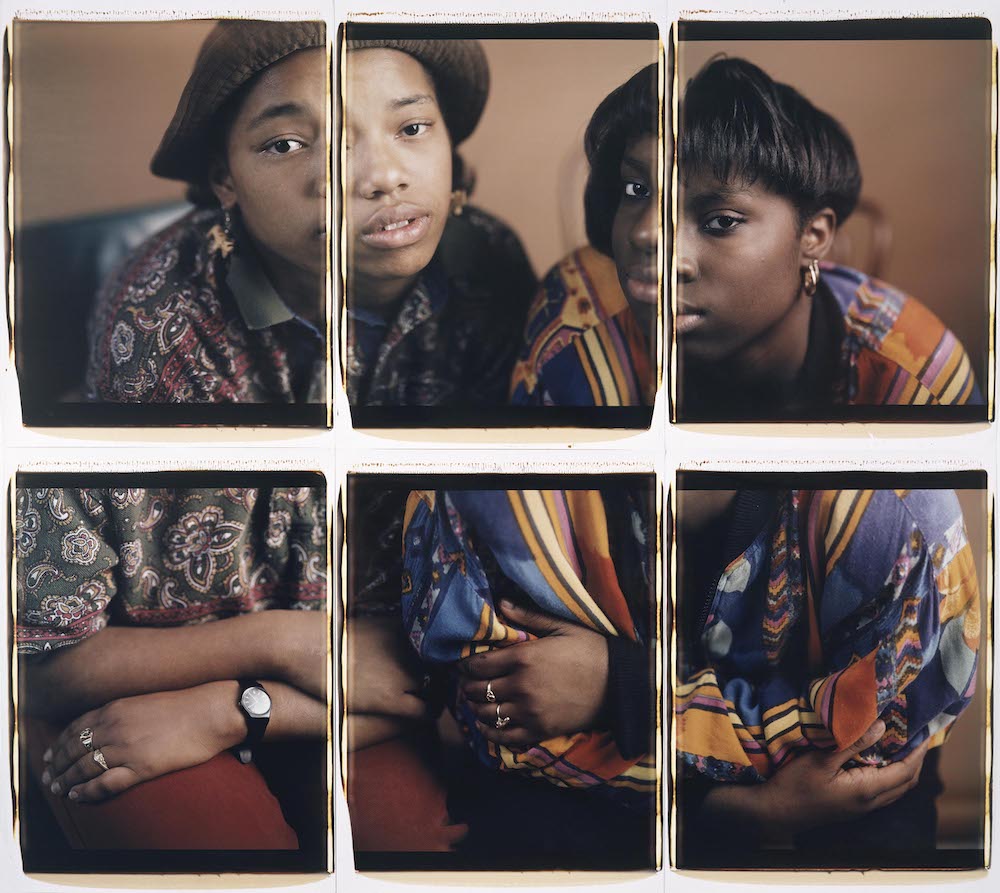
Dawoud Bey, Martina and Rhonda, 1993, six dye diffusion transfer prints (Polaroid), overall: 48 × 60″. Whitney Museum of American Art, gift of Eric Ceputis and David W. Williams. © Dawoud Bey.
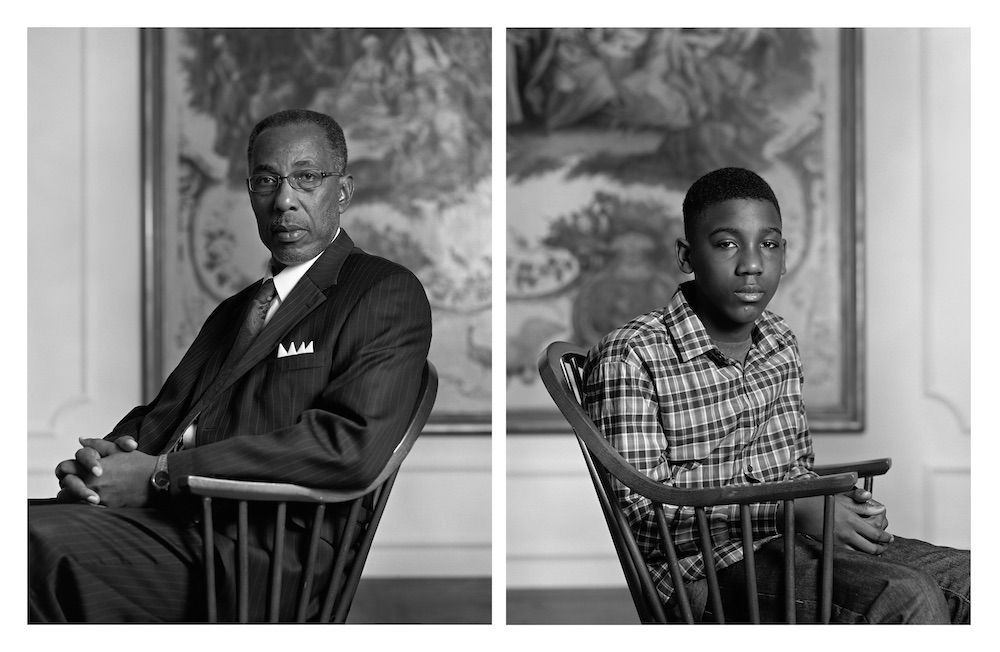
Dawoud Bey, Don Sledge and Moses Austin, from The Birmingham Project, 2012, pigmented inkjet prints, each: 40 x 32″; framed, each: 41 1/8 x 33 1/8 x 2″. Rennie Collection, Vancouver. © Dawoud Bey.

Dawoud Bey, A Woman at Fulton Street and Washington Avenue, Brooklyn, NY, 1988, inkjet print, 40 x 30″. © Dawoud Bey and courtesy of the artist, Sean Kelly Gallery, Stephen Daiter Gallery, and Rena Bransten Gallery.
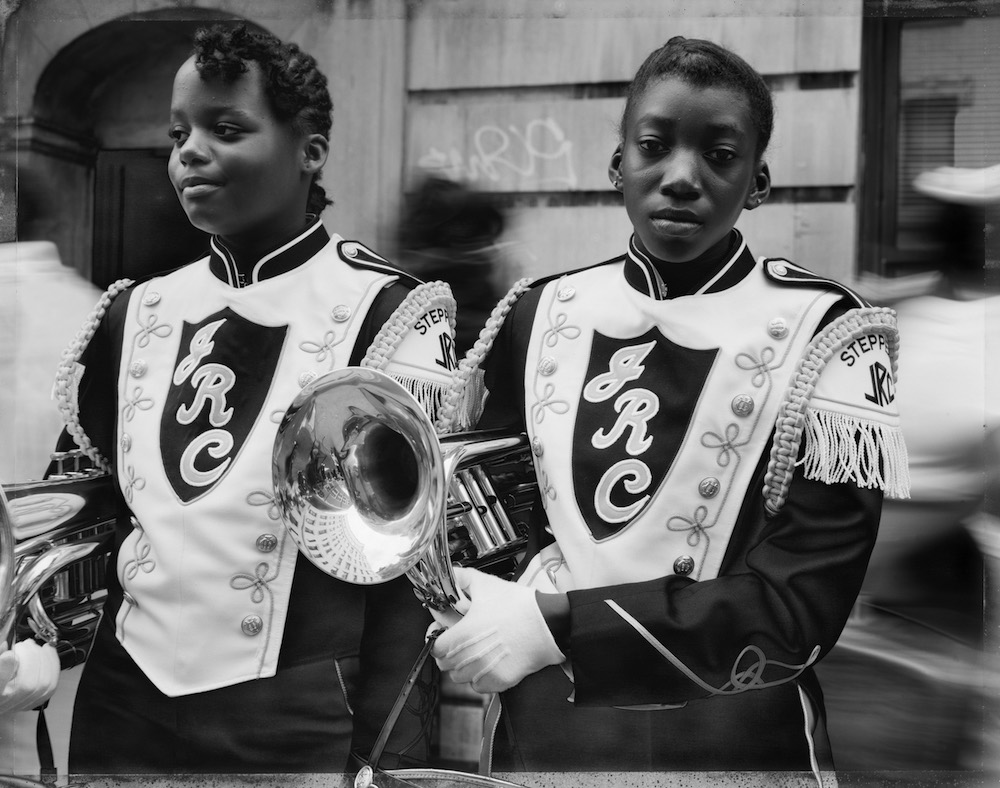
Dawoud Bey, Two Girls from a Marching Band, 1990, pigmented inkjet print (printed 2019), 30 x 40″; frame: 41 1/8 x 50 1/8 x 2 1/8″. Collection of the artist. Courtesy Sean Kelly Gallery, New York; Stephen Daiter Gallery, Chicago; and Rena Bransten Gallery, San Francisco. © Dawoud Bey.
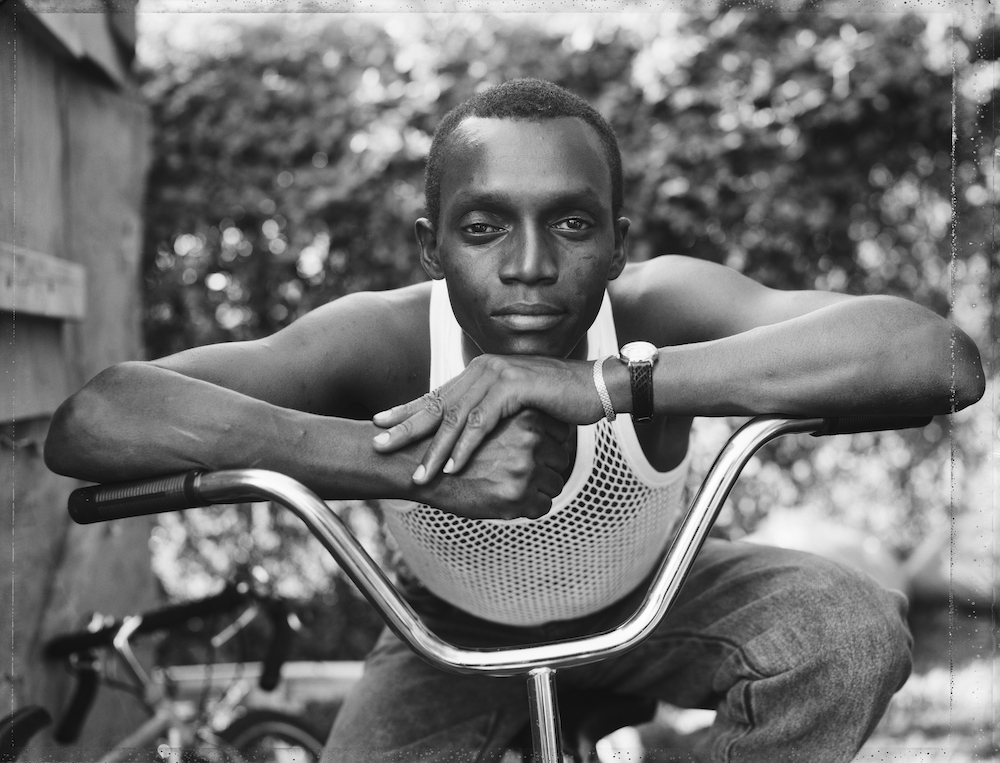
Dawoud Bey, A Young Man Resting on an Exercise Bike, Amityville, NY, 1988, inkjet print, 30 x 40″. © Dawoud Bey and courtesy of the artist, Sean Kelly Gallery, Stephen Daiter Gallery, and Rena Bransten Gallery.
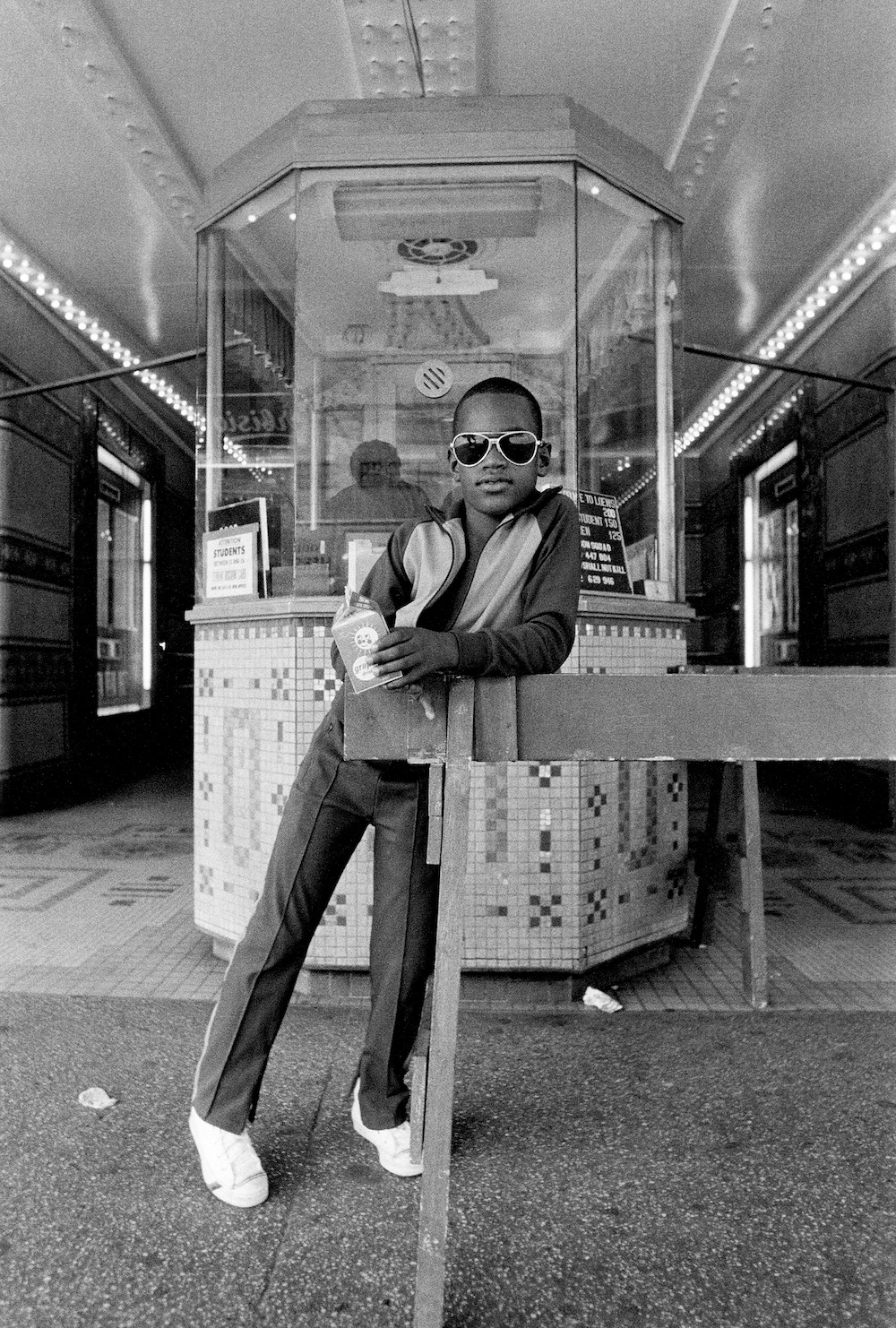
Dawoud Bey, A Boy in Front of the Loew’s 125th Street Movie Theater, 1976, gelatin silver print (printed 2019), 14 x 11″; frame: 20 5/8 x 16 5/8 x 1 1/2″. Collection of the artist. Courtesy Sean Kelly Gallery, New York; Stephen Daiter Gallery, Chicago; and Rena Bransten Gallery, San Francisco. © Dawoud Bey.
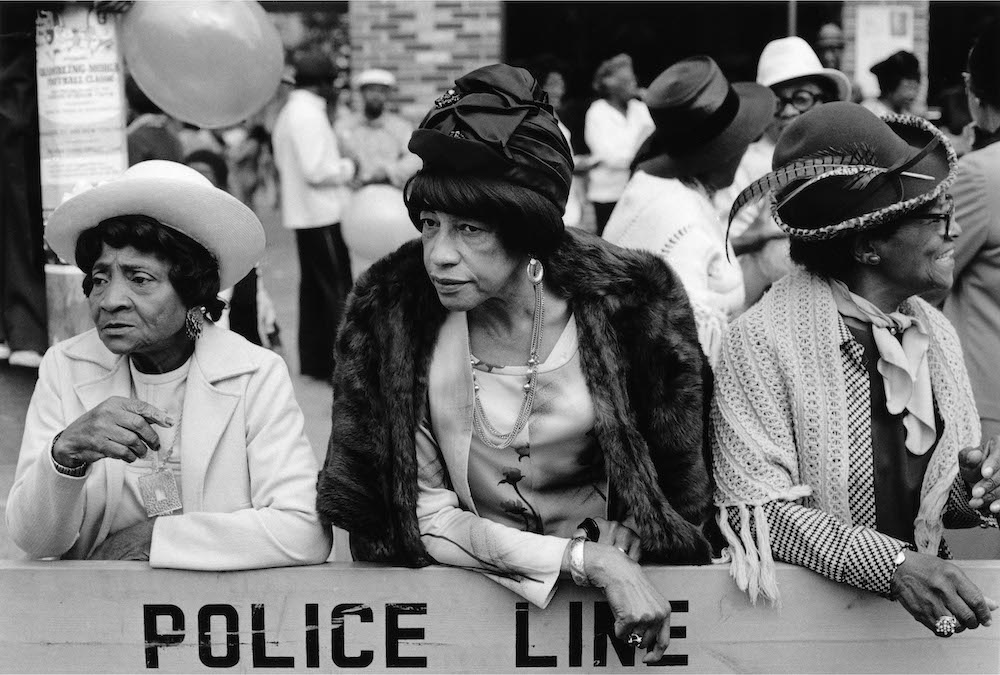
Dawoud Bey, Three Women at a Parade, Harlem, NY, 1978, gelatin silver print, 11 x 14″. © Dawoud Bey. Collection of the artist. Courtesy Sean Kelly Gallery, New York; Stephen Daiter Gallery, Chicago; and Rena Bransten Gallery, San Francisco.
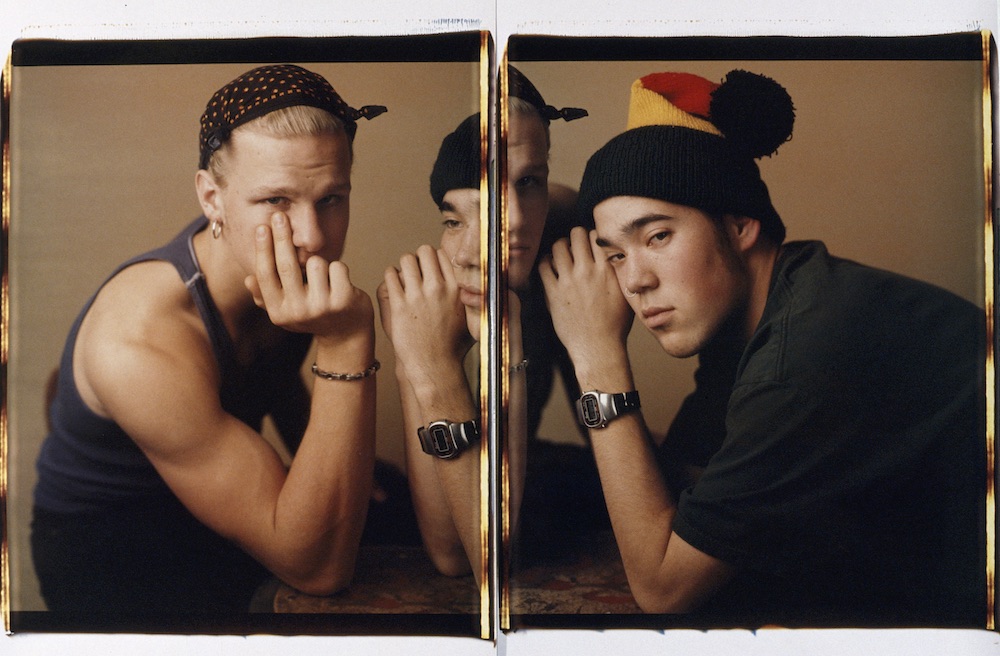
Dawoud Bey, Hilary and Taro, 1992, two dye diffusion transfer prints (Polaroids), overall: 30 1/8 × 44″; frame: 33 3/4 × 47 1/2 × 1 3/4″. Whitney Museum of American Art, Purchase, with funds from the Photography Committee.
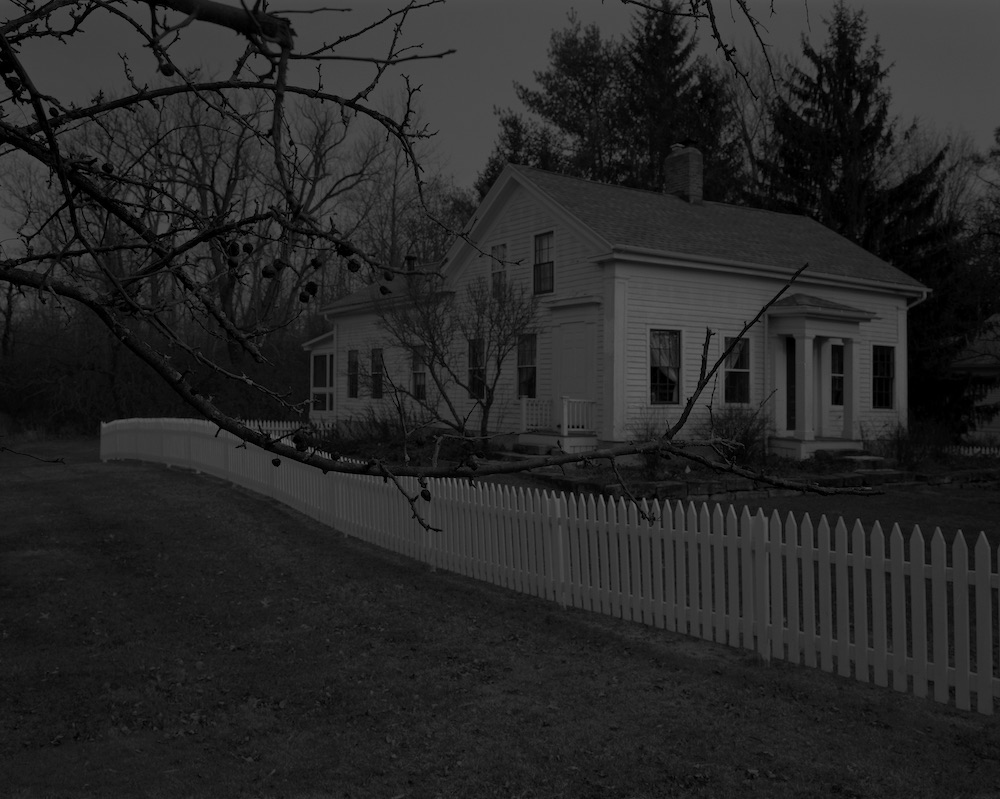
Dawoud Bey, Untitled #20 (Farmhouse and Picket Fence I), 2017, gelatin silver print, 44 x 55″. Collection of the San Francisco Museum of Modern Art; Accessions Committee Fund purchase. © Dawoud Bey.
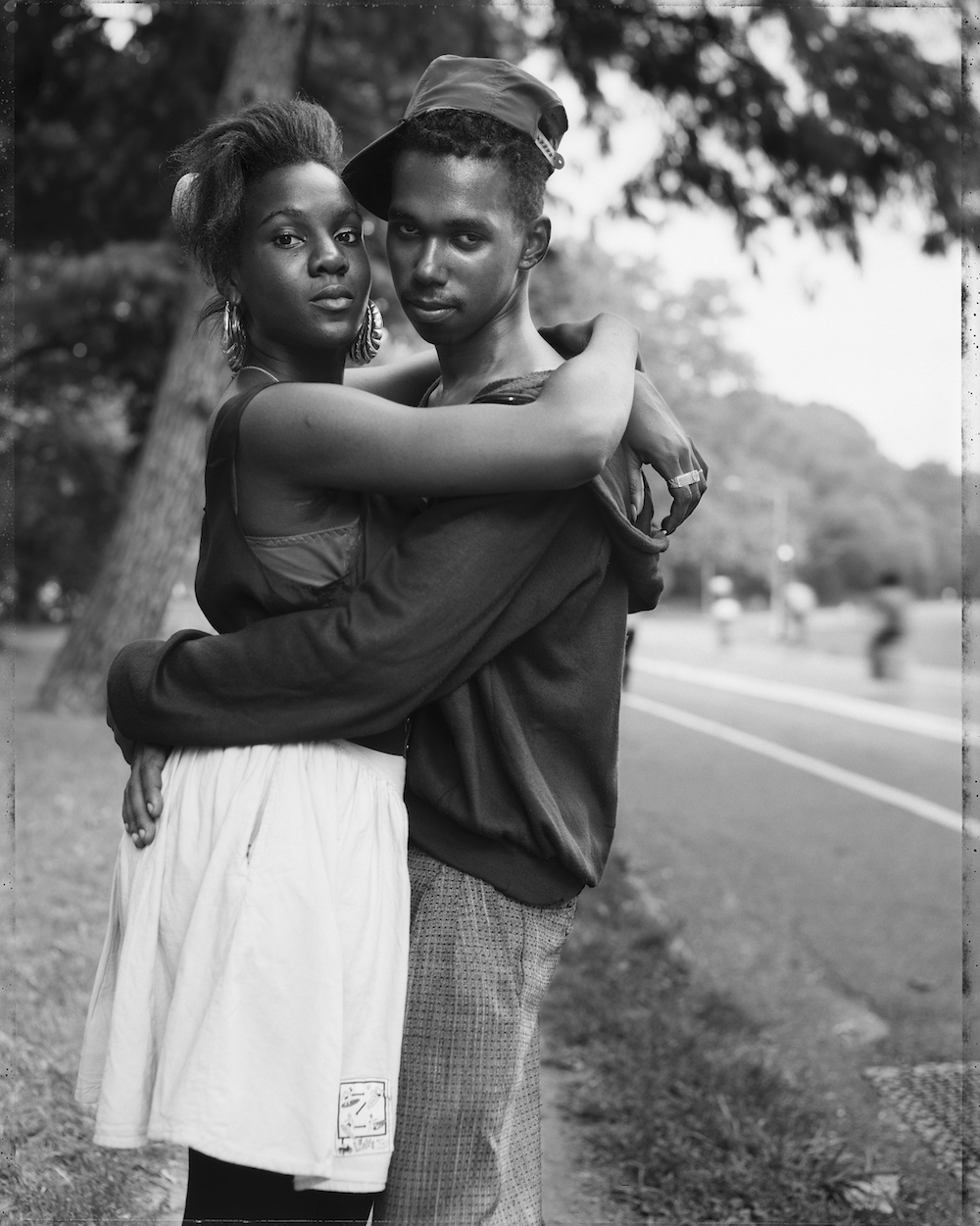
Dawoud Bey, A Couple in Prospect Park, Brooklyn, NY, 1990, inkjet print, 40 x 30″. © Dawoud Bey and courtesy of the artist, Sean Kelly Gallery, Stephen Daiter Gallery, and Rena Bransten Gallery.
“An American Project” will be on view at the Whitney Museum of American Art through October 3.
from The Paris Review https://ift.tt/2QeydQM
Comments
Post a Comment